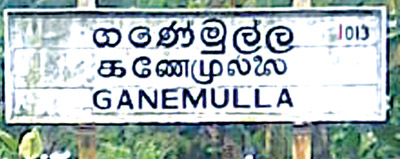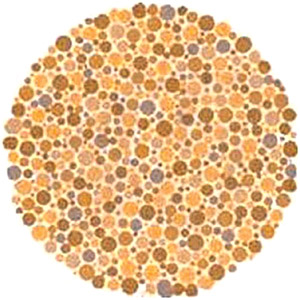|
Variety
What place names tell us
What is the name of your home town, your village or the town where
your school is situated? The name most often has some history behind it;
it tells of the kind of terrain - a marshy or a hilly place, a wood or
whatever it was before it became a human settlement. Sometimes place
names tell us something about an event that happened in that area.
 Place
names usually have two parts like Wella-watta, Ambalan-goda,
Bandara-wela, Aluth-nuwara and Ratna-pura. A few names however have
three parts as in Na-golla-gama and Gona-pinoo-wala. Place
names usually have two parts like Wella-watta, Ambalan-goda,
Bandara-wela, Aluth-nuwara and Ratna-pura. A few names however have
three parts as in Na-golla-gama and Gona-pinoo-wala.
It is the second or last part of the name that tells us about the
terrain.
Most place names end in gama - a place where a number of people built
houses and made it their permanent home. Other common endings are
watta(land or garden) as in Kurundu-watta (Cinnamon Gardens), Others are
wela (field) or pitiya (open ground). Your playground is called a
kreedapitiya in Sinhala. Goda may refer to a vast number of trees or
rest rooms as in Ambalangoda, or it may be referring to slightly high
ground as opposed to the wetland. We talk of goda-mada idam. When
speaking about land.
Let us look at a few less common endings of place name. I am writing
only about Sinhala place names here.
Landa: Names ending in landa are Nalanda (Matale district), Batalanda
(Gampaha district) Koslanda (not far from Diyaluma falls) Peralanda a
railway station on the main line next to Ragama, and Dodangaslanda where
the famous plumbago mines are.
A landa is a grove or small wood and all the place names ending in
the word landa have the name of a tree as the first part. Na, Bata,
(bamboo) Kos Pera and Dodan.
Golla is a small area of trees or bushes growing close together.
Copse/coppice would be the appropriate English words for a golla.
There is Horagolla, Polgolla (off Kandy) Kohombagolla and Palugolla
both in the Wariyapola area.
Your home town or village may have a name ending in doowa. There must
have been a small island on which or around which, the hamlet grew. Is
there or isn't there a tiny island at Dodandoowa, Habaraduwa or Seeduwa
now? It is a relic of the beginning of the settlement Do you know other
place names ending in doowa?
Thuduwa as in Peduru Thuduwa and Devundara Thuduwa, is a point or a
headland, a narrow piece of land julting out from the coast to the sea
or from the land into a river or lake. At Point Pedro and Dondra Head
the strip of land juts out to the sea.
At Berathuduwa (near Balapitiya) the headland juts out into the Madu
Ganga. Other names ending in Thuduwa are Kahathuduwa near Kesbewa and
Horethuduwa in Panadura.
Thota is a ford a shallow place in a river where one can walk or
drive across. In time it became a small harbour where boats stopped.
Still later it became a big port. Hambantota was the port of call for
the Sampan the Chinese sailing vessels coming from Malaysia and China.
There are quite a few coastal towns with names ending in thota such
as Ginthota, Bentota and Ambalantota. They must have originally been
fords.There are inland towns too with names ending in thota.
Yatiyanthota, Delthota, Gongithota, Katugasthota and Weraganthota
were fords where people crossed on foot. At Weraganthota pilgrims
crossed the Mahaweli to the Mahiyangana Vihara. Wera-wehera is another
name for vihara. Thota and tara are interchangeable. Benthota and
Bentara are the same place. In one of the old Sandesa poems, Welitara
near Balapitiya, is referred to as Welithota. Matara is the 'big port'
Mahatara.
Eliya is light. That is one meaning. Eliya has another meaning. So,
Nuwara Eliya is not 'city of light'. Eliya is a large area of flat land,
a plain.
Hortan Plains before being named after Governor Horton was called
Maha Eliya - Great plain by the locals. There are other eliyas flat land
between hills in that area. Sita Eliya and Haawa Eliya which must have
been the playground of horses. Nuwara Eliya therefore means the City in
the plain. All these 'eliyas' are in the Nuwara Eliya district.
Deniya is a swampy narrow valley between two hills. Imagine what
Peradeniya was like before it became the town that it is today with the
Botanical Gardens and the University. Other deniyas are Teldeniya,
Dambadeniya and Karandeniya in the Kandy, Kurunegala and Galle
districts, in that order.
A very odd ending for a place name is 'gedera'. Galagedera in the
Kandy district. Some of them are Dangedera a suburb of Galle and
Pattalagedera, a part of Veyangoda town where the teachers' college is
located. Henpitagedera was the hometown of a famous bhikkhu
Henpitagedera Gnanaseeha.
-Sumana Saparamadu
Are you colour blind?

A person with normal colour vision is capable of distinguishing no
less than seven million different colours. Although the variety of
colours that people are generally able to distinguish is vast, there are
certain individuals whose ability to perceive colour is quite limited.
In other words they are colour-blind.
According to the latest research one in 50 men or one in 5,000 women
are colour-blind.
For those who are colour-blind, the world looks quite dull.
For them, red fire engines will appear yellow. If they look at green
grass, it will also be yellow. If they stop at a traffic light, they
will have a real problem because all the colours - green, amber and
yellow - will appear as yellow!
In extreme cases some colour-blind people will not see any colours.
To them everything in the world will look like a picture on a monochrome
(black and white) television set.
- R.S. |

